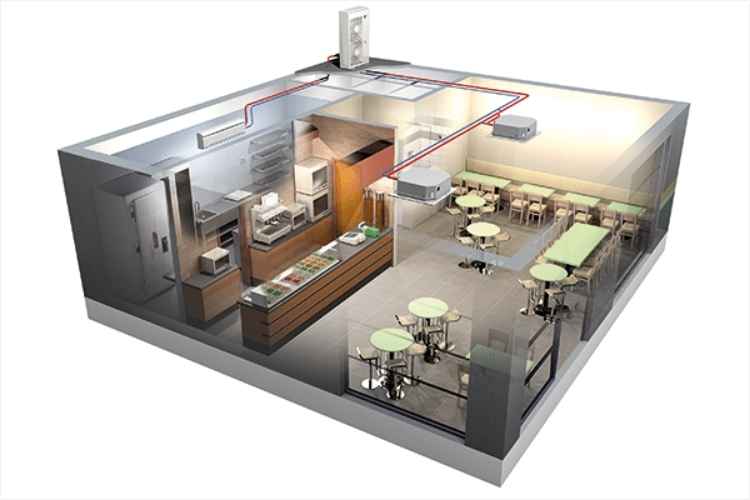Many are familiar with traditional HVAC systems that consist of one central unit pumping out filtered air to an entire space. But a VRF system is increasingly becoming popular and gaining traction. Many opt for it, especially in urban areas where real estate space is a premium.
In contrast to having one massive noisy central unit, the main benefit of a VRF system is it consists of smaller air handlers that can be individually controlled. This type of system can control the amount of refrigerant flowing to every air handler.
- Reliable comfort
A VRF system compressor unit can accurately determine each zone requirement and send specific amounts of refrigerant needed to every handling unit. For example, a south-facing computer room that gets plenty of sunlight will get more cooling.
The precise flow eradicates cold, hot spots, and humidity factors. This system facilitates consistent comfort critical for employee productivity.
- Low noise operation
With a VRF system, the loud noise from the condensing unit will be limited outside your building or to a mechanical room. The VRF’s air handlers are smaller and quieter than those with a large central unit with massive ductwork. Therefore, you won’t have loud noises from the AC disrupting your business.
- Efficient energy
One of the attractive features of a VRF system is its energy efficiency. Other systems run only at a single speed: either on or off. But a VRF system is engineered to run at various speeds, thus supplying the specific amount of refrigerant required to cool the room under a specific setting. As a result, the system runs at a lower capacity and less frequently while using less energy.
The VRF also harnesses heat as part of the cooling process and channels it to other areas in the building that may require heating.
- Installation flexibility for small areas
Another benefit of a VRF system is its compactness and flexibility. It is also travel friendly. There is no need to allocate a massive space for it. There are no bulky parts such as distribution fans, hefty pipes, and water pumps.
Besides these advantages, a VRF system is easy to install. It translates to less space for your air-conditioning system freeing up more space for you to use. It is a huge plus considering the cost of premium space in urban cities.
Since VRF systems do not typically require ducts and are designed to have small air handlers, it mitigates the need to take up wall and ceiling space to install large vents. It is good news for business owners who do not want to have ductwork on their ceilings.
- Modern controls and smart technology
One of the top benefits of a VRF is you can utilize your mobile device to set the temperature setting in various zones. If you are a business owner running a commercial establishment, you can potentially forgo the purchase of expensive building management software.
Without a doubt, smart technology is one of the benefits of this system. Besides supplying an optimal flow of refrigerant to every air handler based on operation settings, a VRF can also track conditions and provide alerts. This monitoring capability ensures the flawless operation of the climate control system in your business.


























